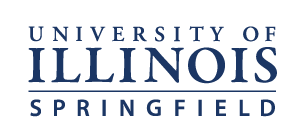The Wild Duck Cluster (M11)
This open star cluster in the Milky Way is well known to amateur astronomers as a particularly rich and colorful cluster. The colors reveal the temperatures of the stars, with blue stars being hotter and red stars being cooler. Below is an image produced from a series of exposures taken by the 20-inch telescope at the UIS Barber Observatory on June 11, 2013. This cluster contains about 2900 stars and has an estimated age of 220 million years (very young when we consider our own Sun is at least 4 billion years old).
Supernova 2013df in NGC 4414
The spiral galaxy to the left of center in this picture is NGC 4414. It is about 62 million lightyears away from Earth in the constellation Coma Berenices. On June 8th astronomers in Italy noted a new bright star in the galaxy just to the left of the center in this image. A spectrum obtained by the Keck II telescope in Hawaii two days later confirmed this was a star many times the mass of the Sun that had exploded as a supernova.
Perseid Meteor Star Party August 11/12
The University of Illinois Springfield Astronomy-Physics Program is co-hosting a viewing of the Perseid Meteor shower before dawn on Monday, August 12.
Nearby Galaxy M33
This is a composite image of the galaxy M33 in the constellation Triangulum. It is a collection of 40 billion stars about 3 million light years away. M33 is one of three large galaxies in our local group (including also the Andromeda Galaxy and the Milkway Galaxy).
News
Astronomy-Physics News
Campus Observatory
Renovation of the Campus Observatory
Watch Our Annual Campaign Video
Summer Star Parties
Summer Star Parties Events
This is the page for Star Parties held off campus in the spring and summer with community partners. Lately, we have been holding these events on the Cawley Meadow at Lincoln Memorial Garden with the Sangamon Astronomical Society as co-hosts.
The dates and locations for the Summer Star parties in 2025 are:
Research
Research Opportunities for Students
Students who have an interest in astronomy are encouraged to take advanced course work in the math and the physical sciences and talk to Dr. John Martin about engaging in a research project. Generally students must demonstrate an academic strength in the physical sciences and a strong interest and commitment in order to participate in a research project at the Barber Research Observatory.
Star Parties
Star Parties
Star Parties are the flagship public outreach events of the UIS Observatory, serving the public affairs mission of the University of Illinois Springfield.
From here you can branch off to the three different types of Star Parties we host:
Accessible Star Parties
The University of Illinois at Springfield’s astronomy program developed the world’s first telescope designed for wheelchair access.

